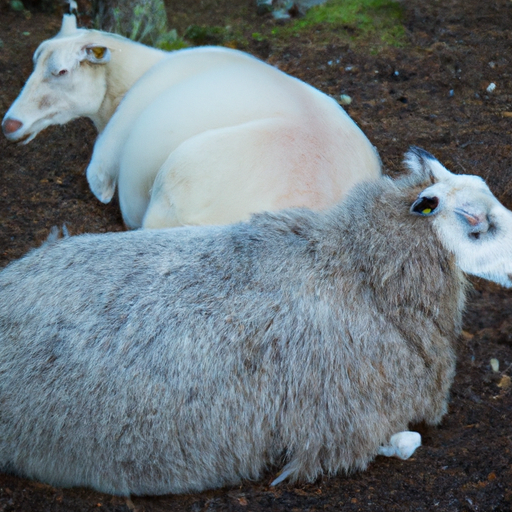 Animals, beyond the commonly known sheep, offer a diverse range of natural fibers that have been used for centuries to produce warm, durable, and luxurious textiles. From the humble alpaca to the elusive muskox, the world is home to several remarkable creatures that provide us with their unique wool. In this comprehensive article, we will delve into the fascinating world of non-sheep wool-bearing animals, exploring their habitats, characteristics, and the remarkable fibers they produce.
Animals, beyond the commonly known sheep, offer a diverse range of natural fibers that have been used for centuries to produce warm, durable, and luxurious textiles. From the humble alpaca to the elusive muskox, the world is home to several remarkable creatures that provide us with their unique wool. In this comprehensive article, we will delve into the fascinating world of non-sheep wool-bearing animals, exploring their habitats, characteristics, and the remarkable fibers they produce.
1. Alpaca:
Native to the Andes mountain range in South America, alpacas are domesticated camelids closely related to llamas. Their wool is highly regarded for its exceptional softness, warmth, and hypoallergenic properties. Alpaca fiber comes in 22 natural colors and can be as fine as cashmere, making it a highly sought-after material for luxury garments and accessories. The fiber is also naturally flame-resistant and possesses excellent insulation properties, providing warmth even in the coldest climates.
2. Angora Rabbit:
Originating from Ankara, Turkey, the Angora rabbit is renowned for its incredibly soft and silky wool, known as Angora fiber. These rabbits have long, dense coats that require regular grooming to prevent matting. Angora fiber is lightweight, warm, and has excellent moisture-wicking properties. It is commonly blended with other fibers, such as wool or silk, to enhance its durability and create luxurious textiles.
3. Cashmere Goat:
Found primarily in the mountainous regions of Central Asia, including Kashmir, Mongolia, and China, cashmere goats produce one of the most coveted fibers in the world. Cashmere wool is derived from the fine, soft undercoat of the goats, which is combed out during their molting season. This luxurious fiber is incredibly soft, lightweight, and has excellent insulating properties. Cashmere is renowned for its ability to provide warmth without adding bulk, making it a popular choice for high-end sweaters, scarves, and blankets.
4. Camel:
Camels, known for their ability to endure harsh desert conditions, also provide a valuable source of wool. The Bactrian camel, found in Central Asia, and the dromedary camel, native to the Middle East and North Africa, both produce a coarse outer coat and a soft, insulating undercoat known as camel hair. This insulating undercoat is collected during the molting season and is used to create warm, durable textiles. Camel hair is often blended with other fibers, such as wool or cashmere, to improve its softness and draping qualities.
5. Muskox:
Native to the Arctic regions of North America, Greenland, and Russia, muskoxen are large, shaggy mammals that provide a rare and highly prized wool called qiviut. Qiviut is incredibly soft, fine, and lightweight, making it one of the most luxurious fibers in the world. It is known for its exceptional insulating properties, being up to eight times warmer than sheep’s wool. Qiviut is also hypoallergenic and does not shrink or felt, making it ideal for delicate garments or accessories.
6. Llama:
Llamas, like alpacas, are native to the Andes mountain range in South America. They produce a coarse, durable wool that is often used for outerwear and rugs. Llama wool is known for its excellent thermal properties, providing warmth even in wet conditions. The fiber is also resistant to fading and is naturally flame-retardant, making it a popular choice for outdoor clothing and blankets.
7. Yak:
Yaks, native to the Himalayan region of Asia, including Tibet and Nepal, have long been treasured for their wool. Yak wool, also known as yak down, is a soft, warm fiber that is comparable to cashmere in terms of its luxuriousness. It is highly insulating, lightweight, and has excellent moisture-wicking properties. Yak wool is often blended with other fibers, such as silk or merino wool, to create textiles that are both warm and breathable.
8. Vicuña:
The vicuña, a wild relative of the llama and alpaca, is found in the high-altitude regions of the Andes in South America. Its wool is considered one of the finest and most expensive fibers in the world. Vicuña wool is incredibly soft, lightweight, and warm, with excellent insulating properties. Due to its rarity and the fact that it can only be shorn once every three years, vicuña wool is highly coveted and often reserved for luxury textiles and high-end fashion.
In conclusion, the world is home to a remarkable array of animals that provide us with diverse and luxurious fibers. From the softness of alpaca and Angora rabbit wool to the warmth of cashmere and qiviut, these non-sheep wool-bearing animals have played a significant role in the creation of exquisite textiles throughout history. Their fibers continue to be cherished for their natural properties, sustainability, and the unparalleled comfort they provide.
